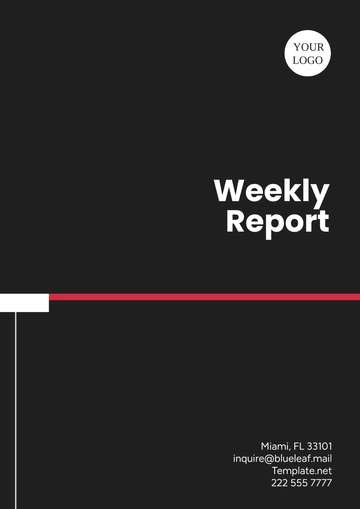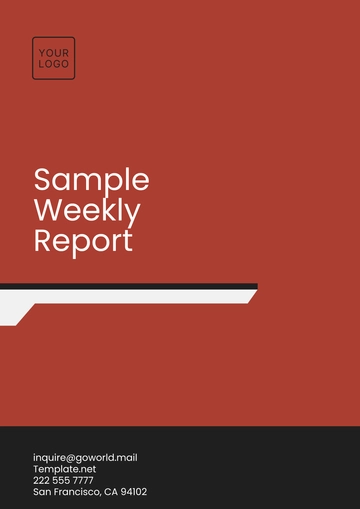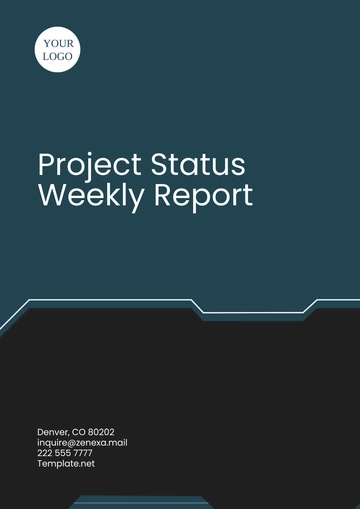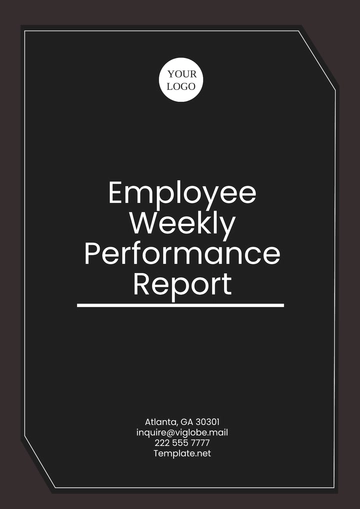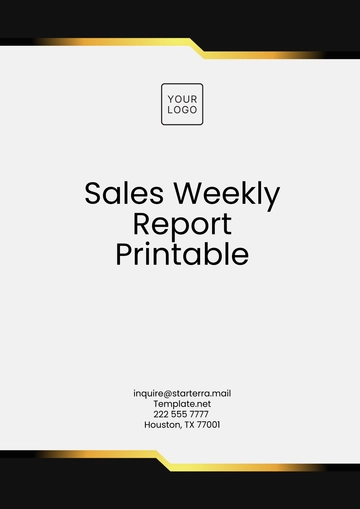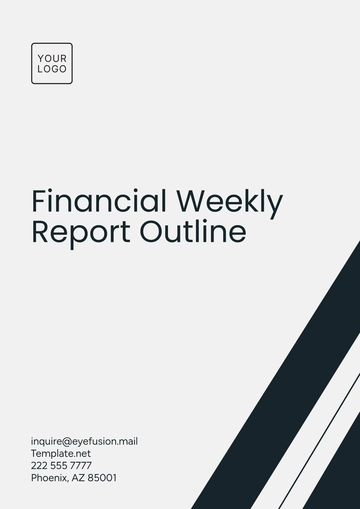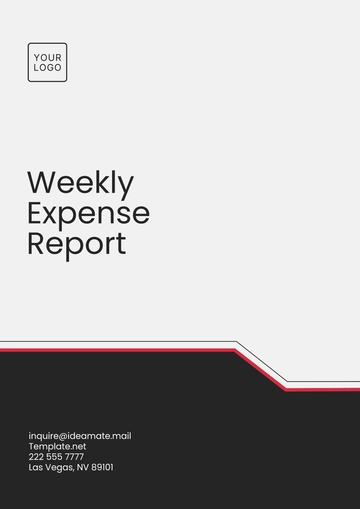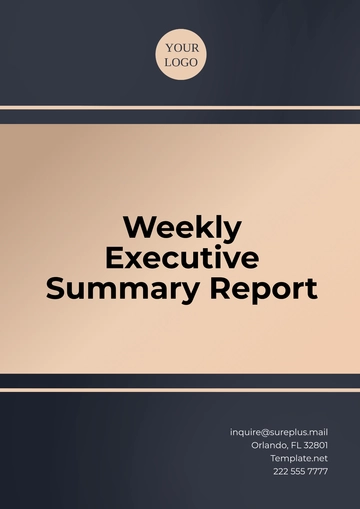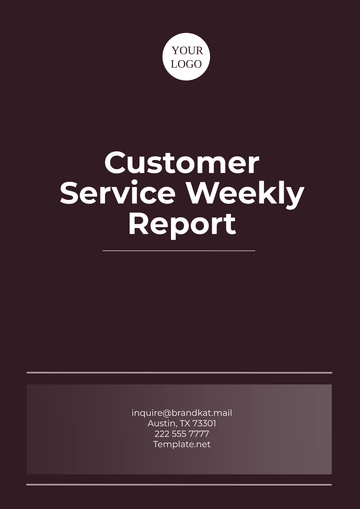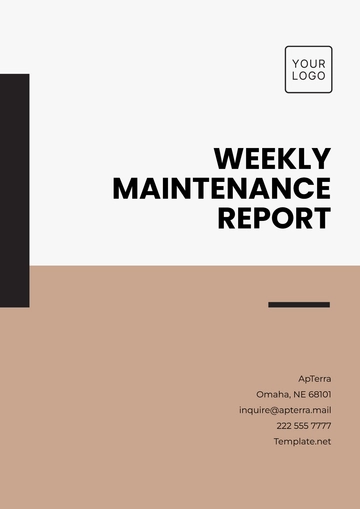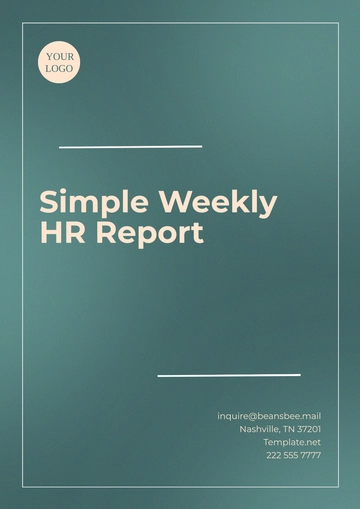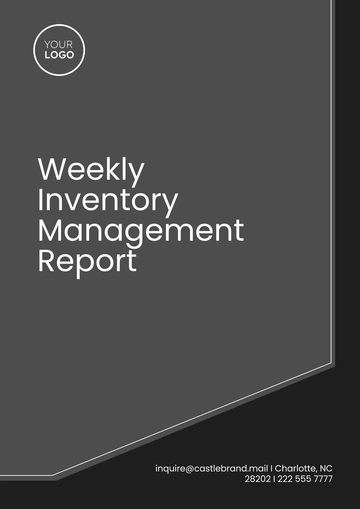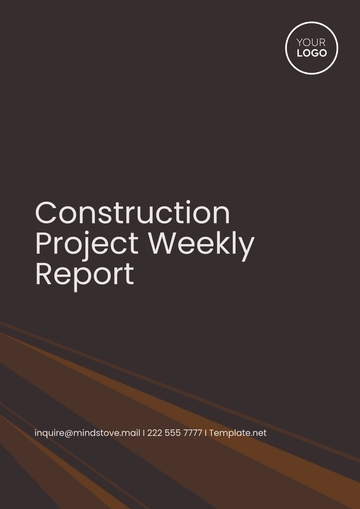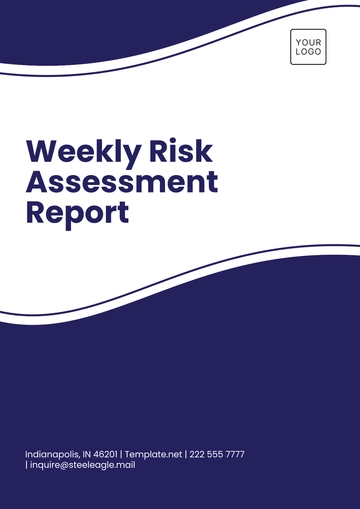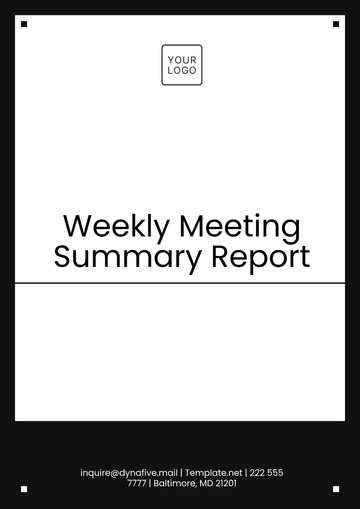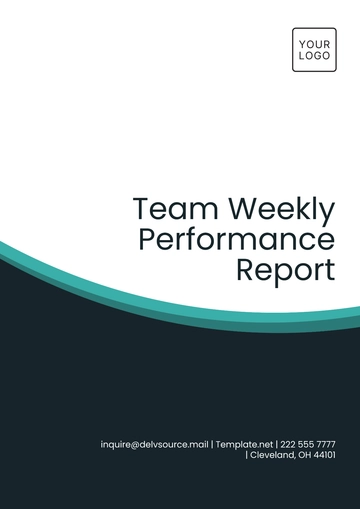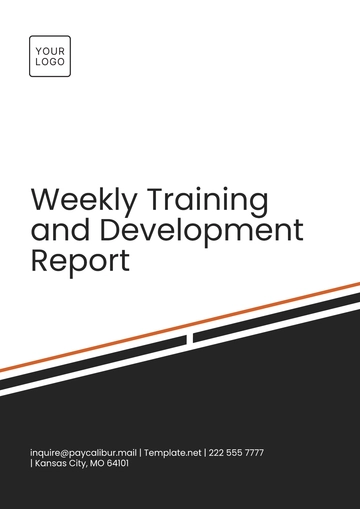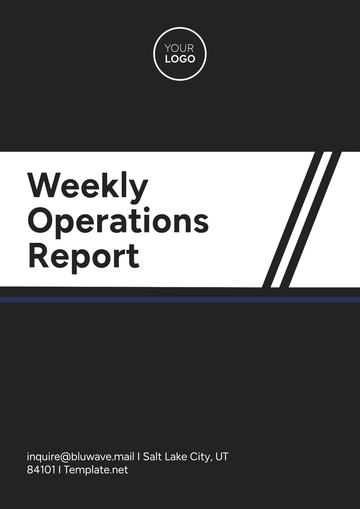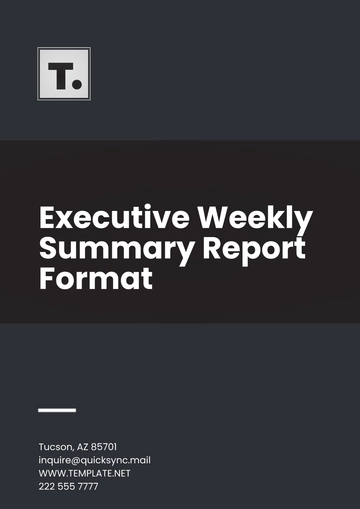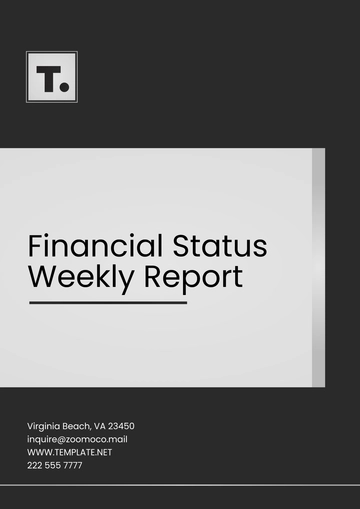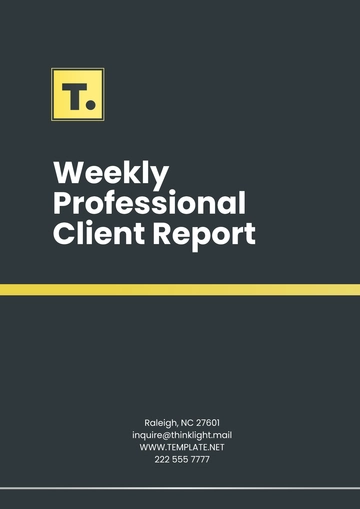Free Quality Assurance Weekly Report
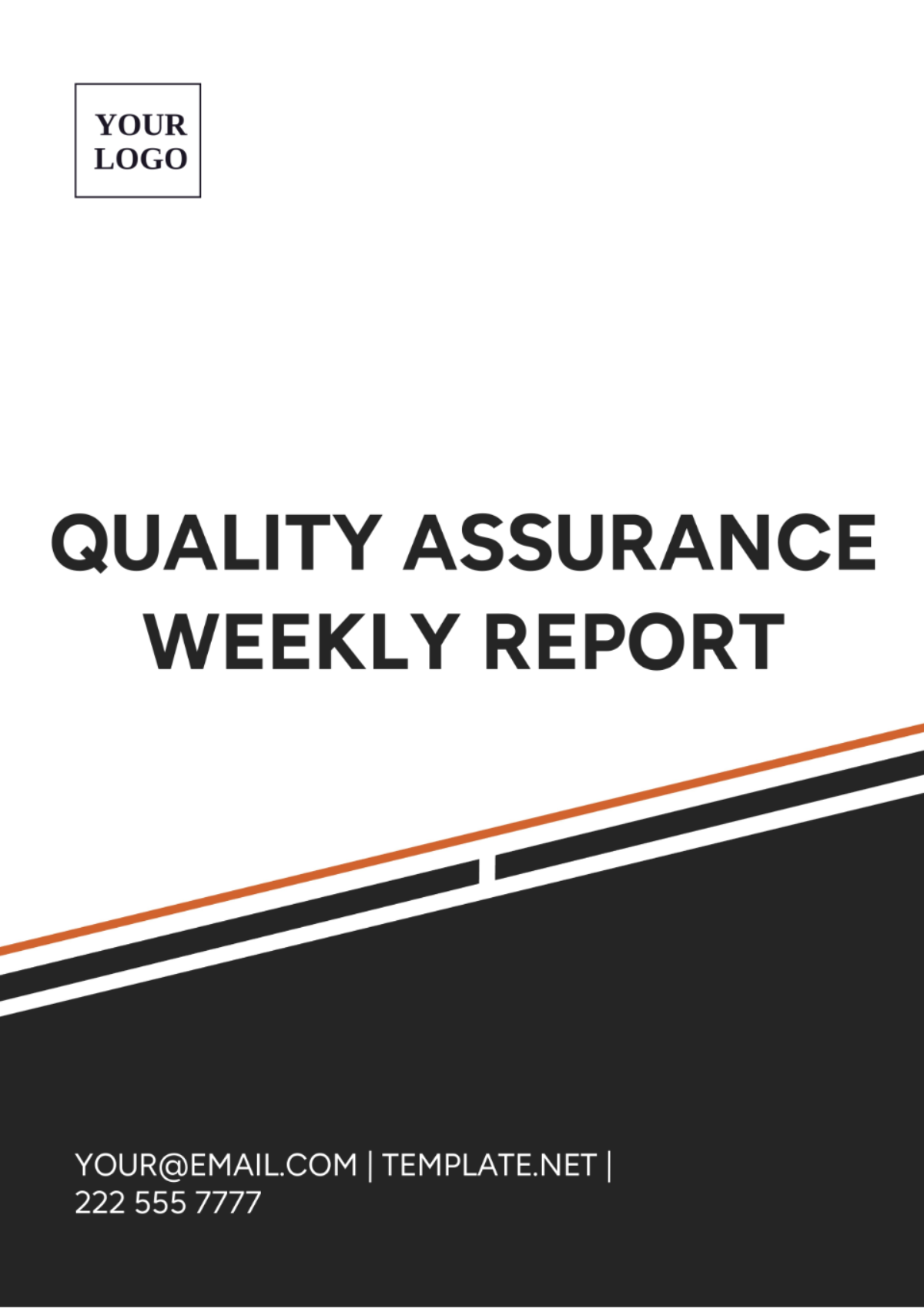
Prepared By | Company | Date Prepared |
|---|---|---|
[YOUR NAME] | [YOUR COMPANY NAME] | [DATE] |
I. Introduction
The Quality Assurance Weekly Report aims to provide a comprehensive overview of the quality assurance activities conducted during the [REPORT DETAILS] period. This report serves as a crucial tool for [YOUR COMPANY NAME] to assess the quality status of ongoing projects and identify areas for improvement. It encompasses a range of quality assurance methodologies and tools to ensure that [YOUR COMPANY NAME]'s products or services meet the highest standards of quality and customer satisfaction.
II. Methodology
In this section, the Quality Assurance Weekly Report outlines the methodologies employed to assess and monitor quality during the reporting period. The [YOUR DEPARTMENT] team utilized a combination of automated testing tools, manual inspections, and peer reviews to comprehensively evaluate the quality of [REPORT DETAILS]. Additionally, [YOUR DEPARTMENT] conducted regular meetings with project stakeholders to gather feedback and address any quality concerns in a timely manner.
Key methodologies employed:
Automated testing using [TESTING TOOL NAME] to streamline the testing process and identify defects efficiently.
Manual inspections conducted by [YOUR DEPARTMENT] experts to ensure adherence to quality standards and specifications.
Peer reviews facilitated among team members to promote collaboration and identify potential areas for improvement.
III. Findings
The Quality Assurance Weekly Report presents the findings of quality assurance activities conducted throughout the [REPORT DETAILS] period. These findings offer valuable insights into the quality status of [REPORT DETAILS] and highlight any issues or trends that require attention. By analyzing these findings, [YOUR COMPANY NAME] can make informed decisions to enhance product or service quality and drive continuous improvement initiatives.
Key findings include:
Identification of [Number] defects during automated testing, categorized by severity level for prioritization.
Analysis of customer feedback highlighting [Number] recurring issues or areas of dissatisfaction.
Evaluation of adherence to quality standards and specifications across [Number] projects, identifying potential areas for improvement.
IV. Analysis
In this section, the Quality Assurance Weekly Report provides a detailed analysis of the findings presented in the previous section. The analysis aims to identify root causes of quality issues, assess their impact on [REPORT DETAILS], and propose actionable insights to address them. By conducting a thorough analysis, [YOUR DEPARTMENT] can develop effective strategies to improve overall quality and mitigate risks associated with [REPORT DETAILS].
Key aspects of the analysis:
Root cause analysis of identified defects to determine underlying issues and areas for process improvement.
Impact assessment of quality issues on [REPORT DETAILS] timelines, budget, and customer satisfaction.
Identification of trends or patterns in quality data to proactively address potential risks and challenges.
V. Recommendations
Based on the analysis conducted, the Quality Assurance Weekly Report presents actionable recommendations to enhance quality and mitigate risks associated with [REPORT DETAILS]. These recommendations are tailored to address specific areas of improvement identified during the reporting period and are designed to support [YOUR COMPANY NAME]'s overarching quality objectives and strategic goals.
Key recommendations include:
Implementing [ACTION] to address recurring defects identified during automated testing.
Enhancing [YOUR DEPARTMENT]'s training and development programs to improve team members' skills and competencies.
Establishing regular quality checkpoints throughout [REPORT DETAILS] to monitor progress and identify potential issues early on.
VI. Key Performance Indicators (KPIs)
In this section, the Quality Assurance Weekly Report outlines the key performance indicators (KPIs) used to measure the effectiveness and efficiency of quality assurance activities during the [REPORT DETAILS] period. These KPIs provide quantitative metrics to evaluate the performance of [YOUR DEPARTMENT] in ensuring product or service quality and identify areas for improvement.
Key Performance Indicators:
Defect Density: The number of defects identified per unit of measurement, such as lines of code or product units tested. A lower defect density indicates higher product quality.
Test Case Coverage: The percentage of test cases executed out of the total test cases planned. Higher test case coverage indicates thorough testing and better risk mitigation.
Defect Resolution Time: The average time taken to resolve defects from the moment they are identified until they are fixed and verified. A shorter resolution time indicates efficient defect management.
Customer Satisfaction Score: Feedback from customers or end-users indicating their level of satisfaction with the product or service quality. Higher satisfaction scores correlate with better quality outcomes.
Regression Test Pass Rate: The percentage of regression test cases that pass successfully after implementing changes or updates. A high pass rate indicates stability and reliability of the software system.
By tracking these KPIs, [YOUR COMPANY NAME] can gain valuable insights into the effectiveness of its quality assurance processes and identify areas for optimization and improvement. These metrics serve as benchmarks to measure progress towards quality goals and drive continuous enhancement of [YOUR COMPANY NAME]'s products or services.
VII. Conclusion
In conclusion, the Quality Assurance Weekly Report provides a comprehensive overview of the quality assurance activities conducted during the [REPORT DETAILS] period. It highlights key findings, analysis, and recommendations to support [YOUR COMPANY NAME]'s commitment to delivering high-quality products or services. By leveraging the insights gained from this report, [YOUR COMPANY NAME] can drive continuous improvement initiatives and enhance overall quality performance.
- 100% Customizable, free editor
- Access 1 Million+ Templates, photo’s & graphics
- Download or share as a template
- Click and replace photos, graphics, text, backgrounds
- Resize, crop, AI write & more
- Access advanced editor
Introducing the Quality Assurance Weekly Report Template, exclusively available on Template.net. Crafted for efficiency, this editable and customizable template streamlines your QA process. Seamlessly edit in our Ai Editor Tool to tailor reports to your exact needs. Elevate your quality control with ease and precision.
You may also like
- Sales Report
- Daily Report
- Project Report
- Business Report
- Weekly Report
- Incident Report
- Annual Report
- Report Layout
- Report Design
- Progress Report
- Marketing Report
- Company Report
- Monthly Report
- Audit Report
- Status Report
- School Report
- Reports Hr
- Management Report
- Project Status Report
- Handover Report
- Health And Safety Report
- Restaurant Report
- Construction Report
- Research Report
- Evaluation Report
- Investigation Report
- Employee Report
- Advertising Report
- Weekly Status Report
- Project Management Report
- Finance Report
- Service Report
- Technical Report
- Meeting Report
- Quarterly Report
- Inspection Report
- Medical Report
- Test Report
- Summary Report
- Inventory Report
- Valuation Report
- Operations Report
- Payroll Report
- Training Report
- Job Report
- Case Report
- Performance Report
- Board Report
- Internal Audit Report
- Student Report
- Monthly Management Report
- Small Business Report
- Accident Report
- Call Center Report
- Activity Report
- IT and Software Report
- Internship Report
- Visit Report
- Product Report
- Book Report
- Property Report
- Recruitment Report
- University Report
- Event Report
- SEO Report
- Conference Report
- Narrative Report
- Nursing Home Report
- Preschool Report
- Call Report
- Customer Report
- Employee Incident Report
- Accomplishment Report
- Social Media Report
- Work From Home Report
- Security Report
- Damage Report
- Quality Report
- Internal Report
- Nurse Report
- Real Estate Report
- Hotel Report
- Equipment Report
- Credit Report
- Field Report
- Non Profit Report
- Maintenance Report
- News Report
- Survey Report
- Executive Report
- Law Firm Report
- Advertising Agency Report
- Interior Design Report
- Travel Agency Report
- Stock Report
- Salon Report
- Bug Report
- Workplace Report
- Action Report
- Investor Report
- Cleaning Services Report
- Consulting Report
- Freelancer Report
- Site Visit Report
- Trip Report
- Classroom Observation Report
- Vehicle Report
- Final Report
- Software Report
